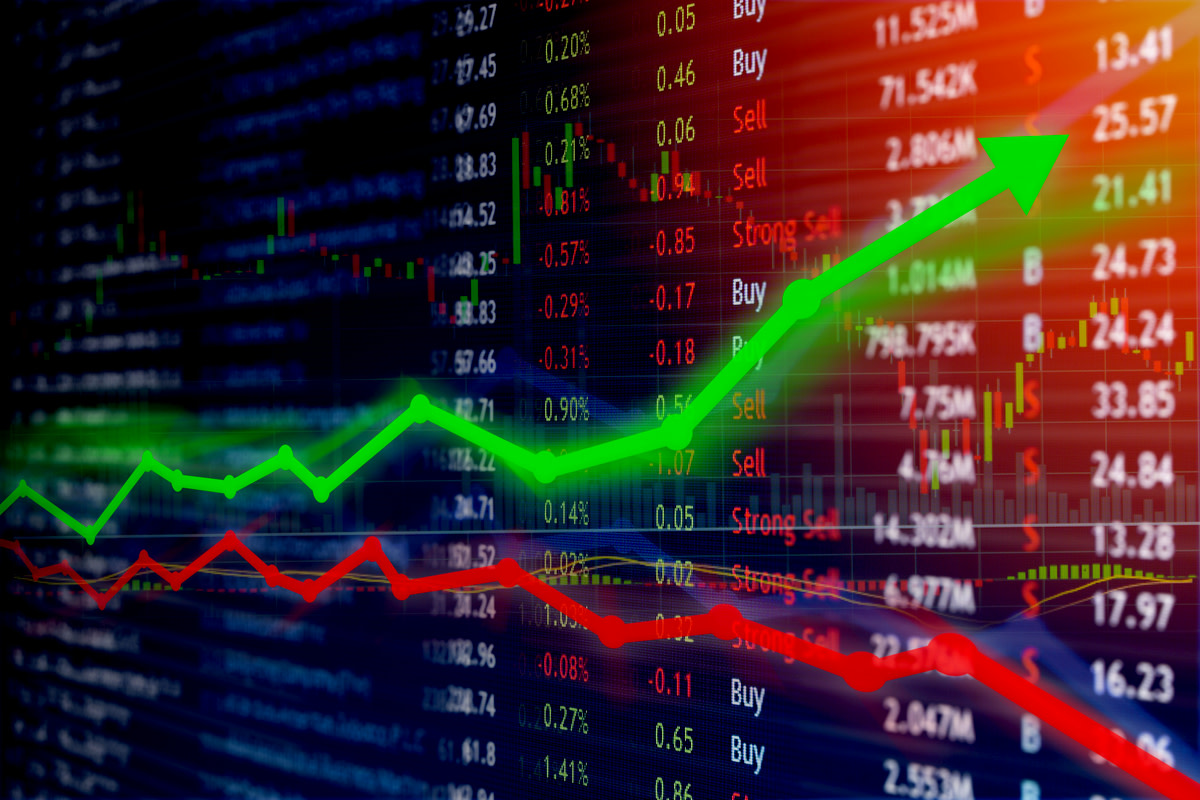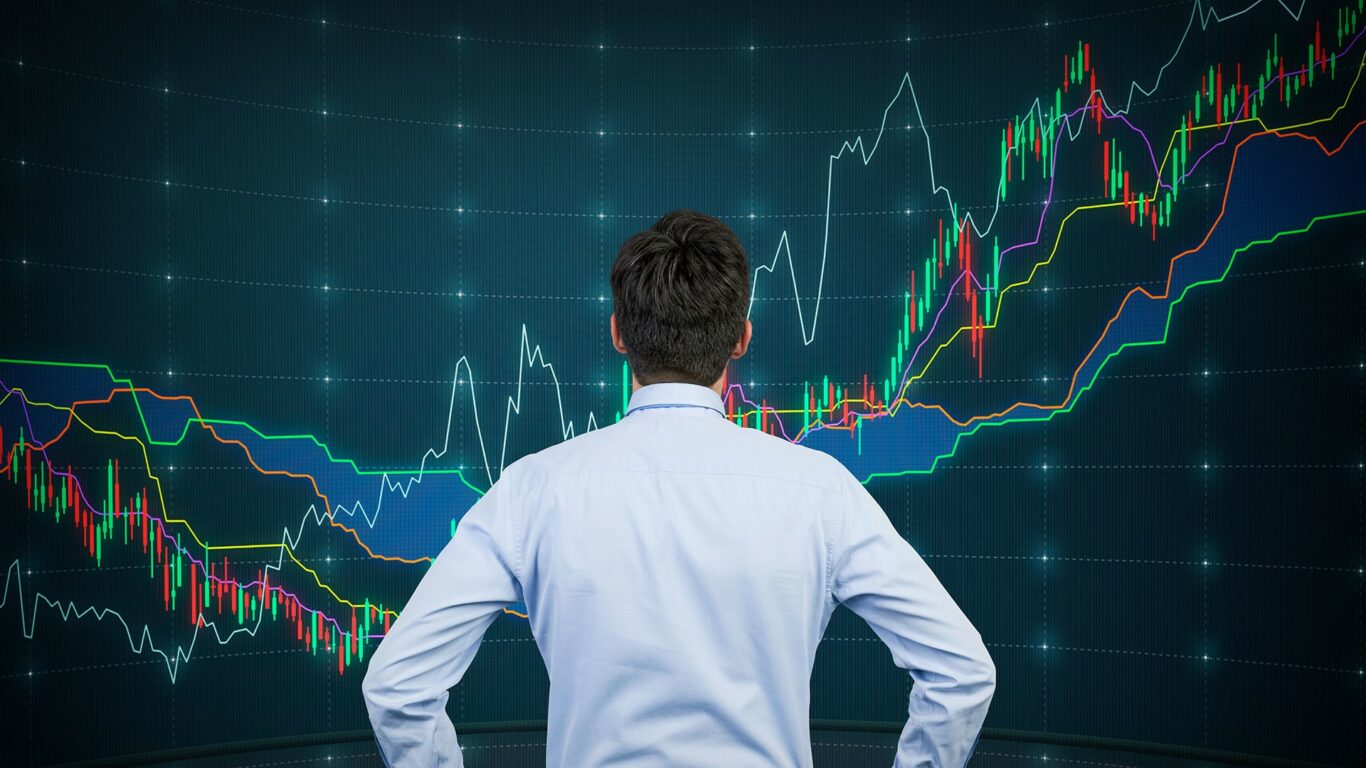The stock market refers to a collection of exchanges and other venues where shares of publicly traded firms can be bought, sold, and issued. Such financial transactions are carried out on institutionalized formal exchanges (physical or electronic) or over-the-counter (OTC) markets that are governed by a set of rules.
Although the phrases “stock market” and “stock exchange” are frequently interchanged, the latter refers to a subset of the former. When someone trades in the stock market, they are buying or selling stocks on one (or more) of the stock exchanges that make up the entire stock market. A country’s or region’s stock market may be made up of one or many exchanges. The New York Stock Exchange (NYSE) and the Nasdaq are the two most important stock exchanges in the United States. The stock market of the United States is made up of these big national exchanges as well as a number of other exchanges that operate in the country.

Understanding New York Stock Exchange (NYSE)
The NYSE—also known as the “Big Board”—has two trading floors, one for equities and the other for the NYSE American options exchange. It is located on Wall Street in New York City. In 1978, both the main building at 18 Broad St. and the one at 11 Wall St. were recognized as historical monuments. By market capitalization, the NYSE is the world’s largest stock exchange, with a market value of $26.64 trillion as of August 2021.
For many years, the NYSE relied only on floor trading, employing the open outcry approach. Many NYSE trades have moved to electronic platforms, with designated market makers (DMMs) primarily responsible for both physical and automated auctions. DMM quotes are comparable to those provided by floor traders and other market participants.
The NYSE is now open for trading from 9:30 a.m. to 4:00 p.m. ET Monday through Friday. On some US holidays, the stock exchange is closed. When certain events fall on a Saturday, the NYSE may be closed the Friday before. The NYSE may be closed the following Monday if a holiday falls on a Sunday.
The NYSE’s Opening and Closing Bells
Prior to 1995, the bells were rung by the exchange’s floor managers. However, the NYSE began regularly inviting corporate officials to ring the opening and closing bells, which eventually became a daily occurrence. The CEOs are from publicly traded firms, and their presentations are occasionally timed to coincide with marketing events like the debut of a new product or innovation, or a merger or acquisition.
Other public figures, such as athletes and celebrities, have been known to ring the bell. Liza Minnelli, Olympic athlete Michael Phelps, and rapper Snoop Dogg are among the celebrities who have rung the bell. 8910 The NYSE joined the United Nations Sustainable Stock Exchanges Initiative in July 2013, when UN Secretary-General Ban Ki-moon rang the closing bell.
While the phrases “stock market” and “stock exchange” are frequently interchanged, the latter is usually a subset of the former. When someone trades in the stock market, they are purchasing or selling stock on one (or more) of the stock exchanges that make up the entire stock market. The stock market of a particular country or region may be made up of one or many exchanges. The New York Stock Exchange (NYSE) and the Nasdaq are the two most important US stock exchanges. The stock market of the United States is made up of these big national exchanges and several other exchanges that operate in the country.
Understanding the Stock Market
The stock market brings together, interacts with, and transacts with a large number of buyers and sellers of securities. Stock markets allow for the price discovery of corporate shares and serve as a barometer for the economy as a whole. Because of the large number of stock market players, one may often expect a fair pricing and a high level of liquidity as market participants strive for the best price.

A stock market is a tightly managed and regulated environment. The Securities and Exchange Commission (SEC) and market participants under the Financial Industry Regulatory Authority are the principal regulators in the United States (FINRA). The stock market maintains fair pricing processes and transaction transparency by bringing together hundreds of thousands of market participants who want to purchase and sell shares. Unlike earlier stock markets, which used paper-based physical share certificates to issue and trade, today’s computerized stock exchanges function entirely electronically.
How the Stock Market Works
In a word, stock markets provide a safe and regulated environment in which market participants can confidently trade shares and other qualified financial instruments with little to no risk of losing money. The stock markets operate as primary and secondary markets, according to the guidelines set forth by the regulator.
The stock market, as a primary market, allows corporations to issue and sell shares to the general public for the first time through an initial public offering (IPO) (IPO). This practice aids businesses in obtaining the funding they require from investors. It essentially means that a company divides itself into a number of shares (for example, 20 million shares) and sells a portion of those shares to the public at a price (for example, $10 per share).
A marketplace where these shares can be sold is required to enable this process. The stock market serves as a marketplace. If all goes according to plan, the corporation will be able to sell 5 million shares for $10 each and make a profit of $50 million. Investors will receive company shares, which they can expect to hold for the length of time they choose, in the hopes of a rise in share price and any prospective income from dividend payments. The stock market facilitates this capital-raising process and earns a fee from the company and its financial partners in exchange for its services.
Important: Following the initial public offering, or IPO, known as the listing process, the stock market also functions as a trading platform for regular buying and selling of the listed shares. The secondary market is made up of this. Every deal that takes place on the stock exchange’s platform during secondary market activity pays the stock exchange a fee.
In such trading activities, the stock exchange is responsible for ensuring price transparency, liquidity, price discovery, and fair dealings. The exchange maintains trading systems that efficiently manage the buy and sell orders from diverse market participants, as practically all major stock markets across the world now function electronically. They execute the price-matching function to make trade execution easier for both buyers and sellers at a fair price.
At a later date, a publicly traded firm may offer new, more shares through subsequent offers, such as rights issues or follow-on offerings. They may even decide to repurchase or delist their stock. Such trades are made possible by the stock exchange.
The stock exchange frequently generates and maintains numerous market-level and sector-specific indices, such as the S&P (Standard & Poor’s) 500 index or the Nasdaq 100 index, to track the overall market’s behavior. The Stochastic Oscillator and the Stochastic Momentum Index are two further ways.

All corporate news, announcements, and financial reporting are also maintained by the stock exchanges, and may usually be found on their official websites. A stock market also facilitates a variety of other transaction-related operations at the business level. Profitable corporations, for example, may pay dividends to investors, which are normally derived from a portion of the company’s earnings. The exchange keeps track of all of this data and can help with its processing to some extent.

